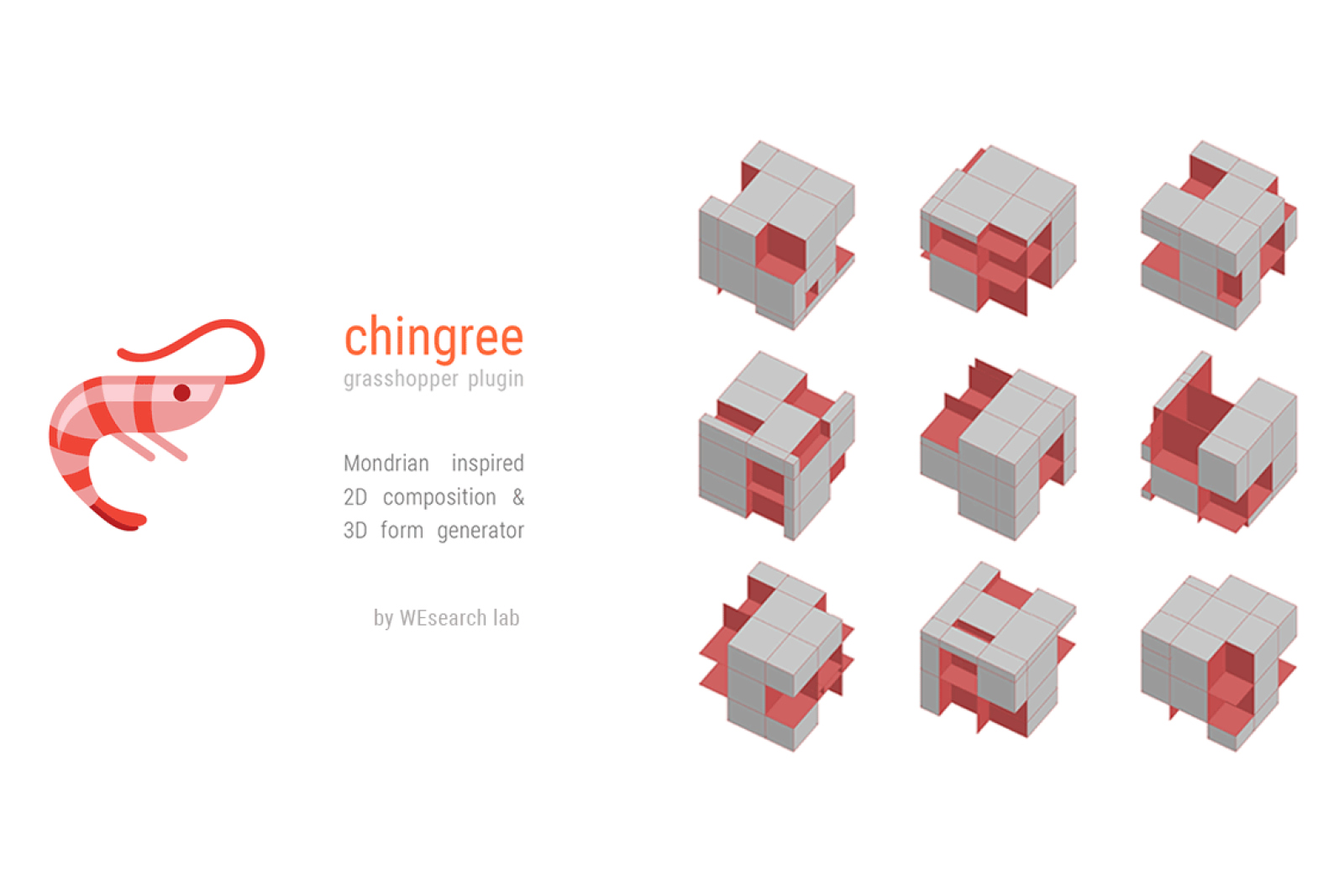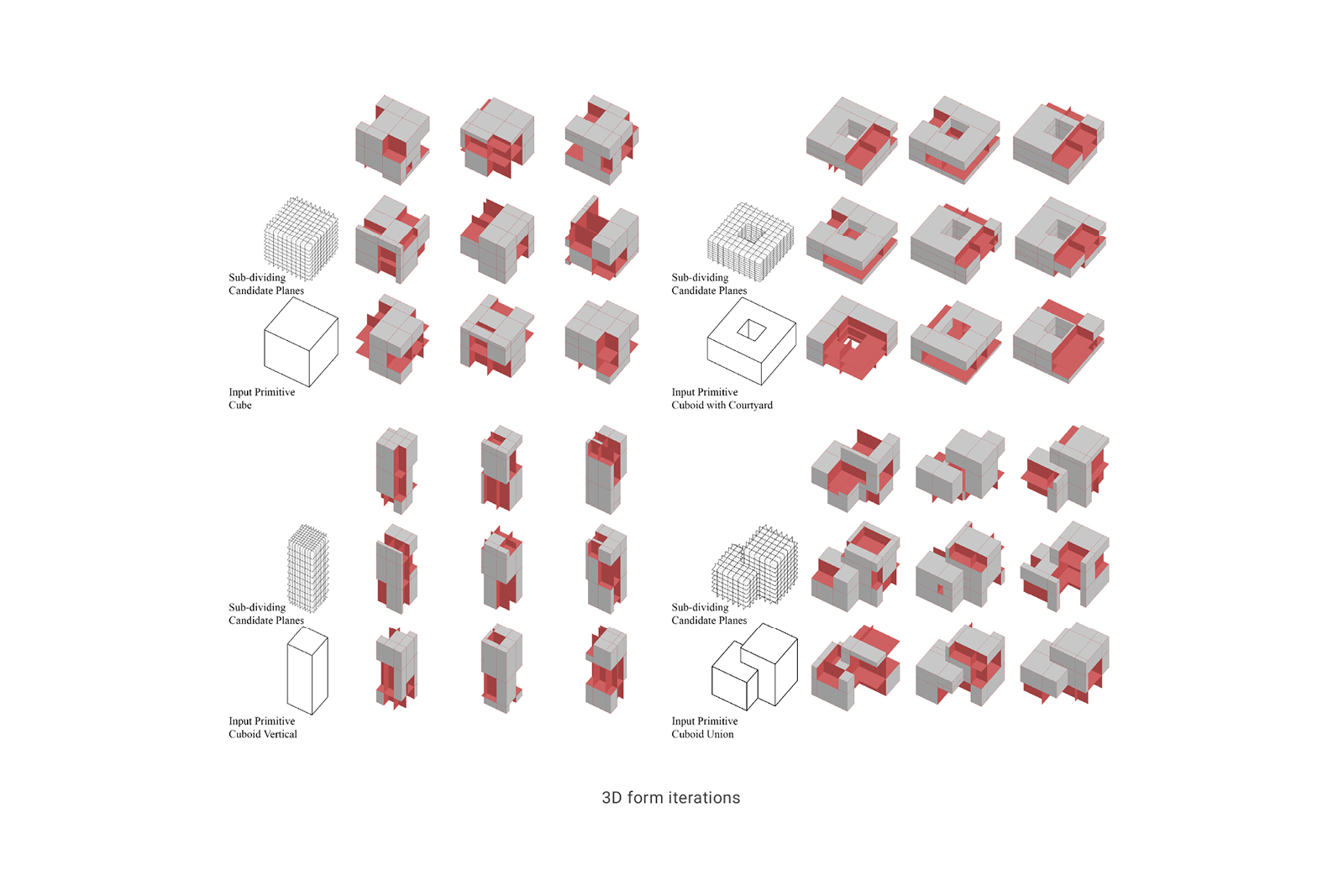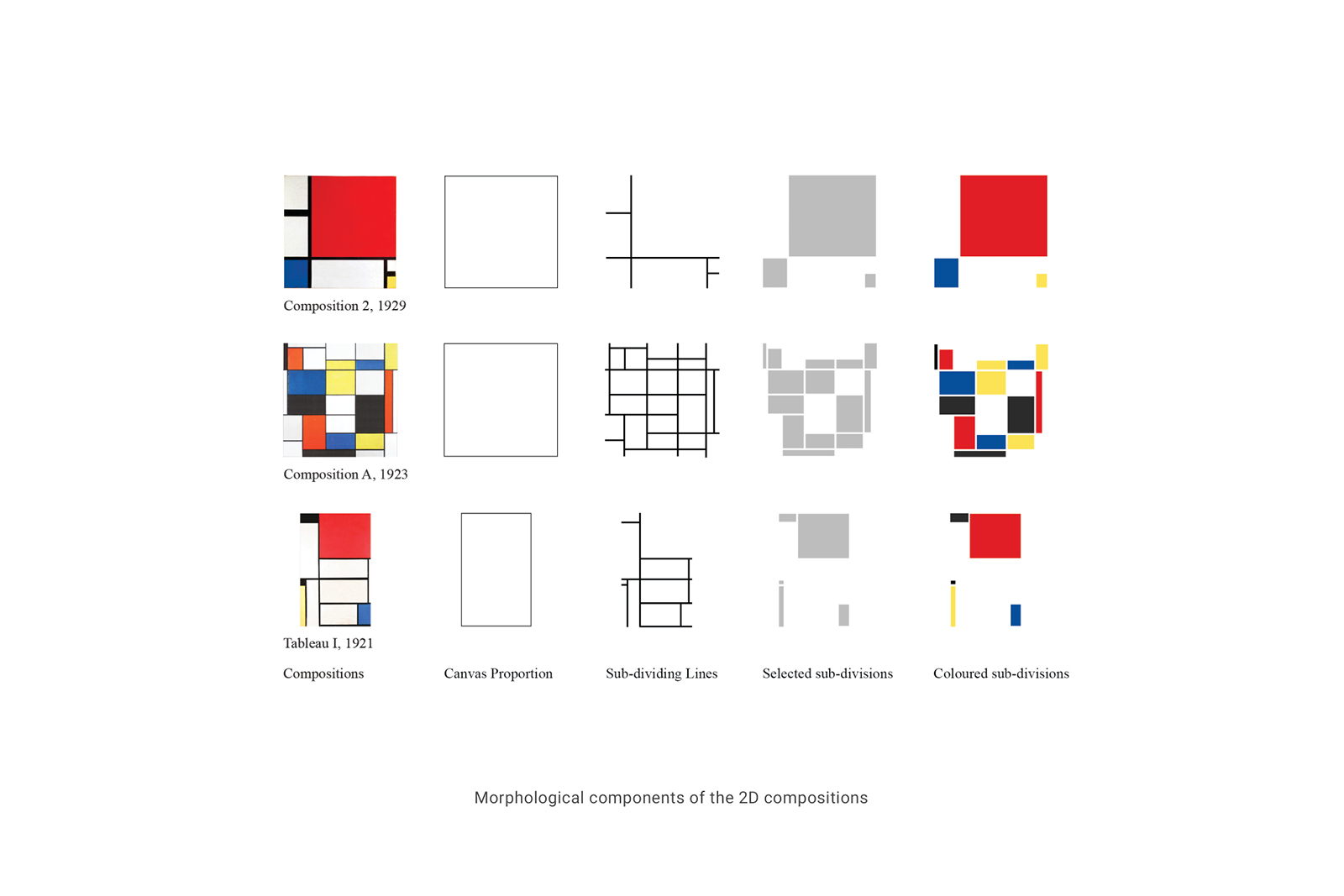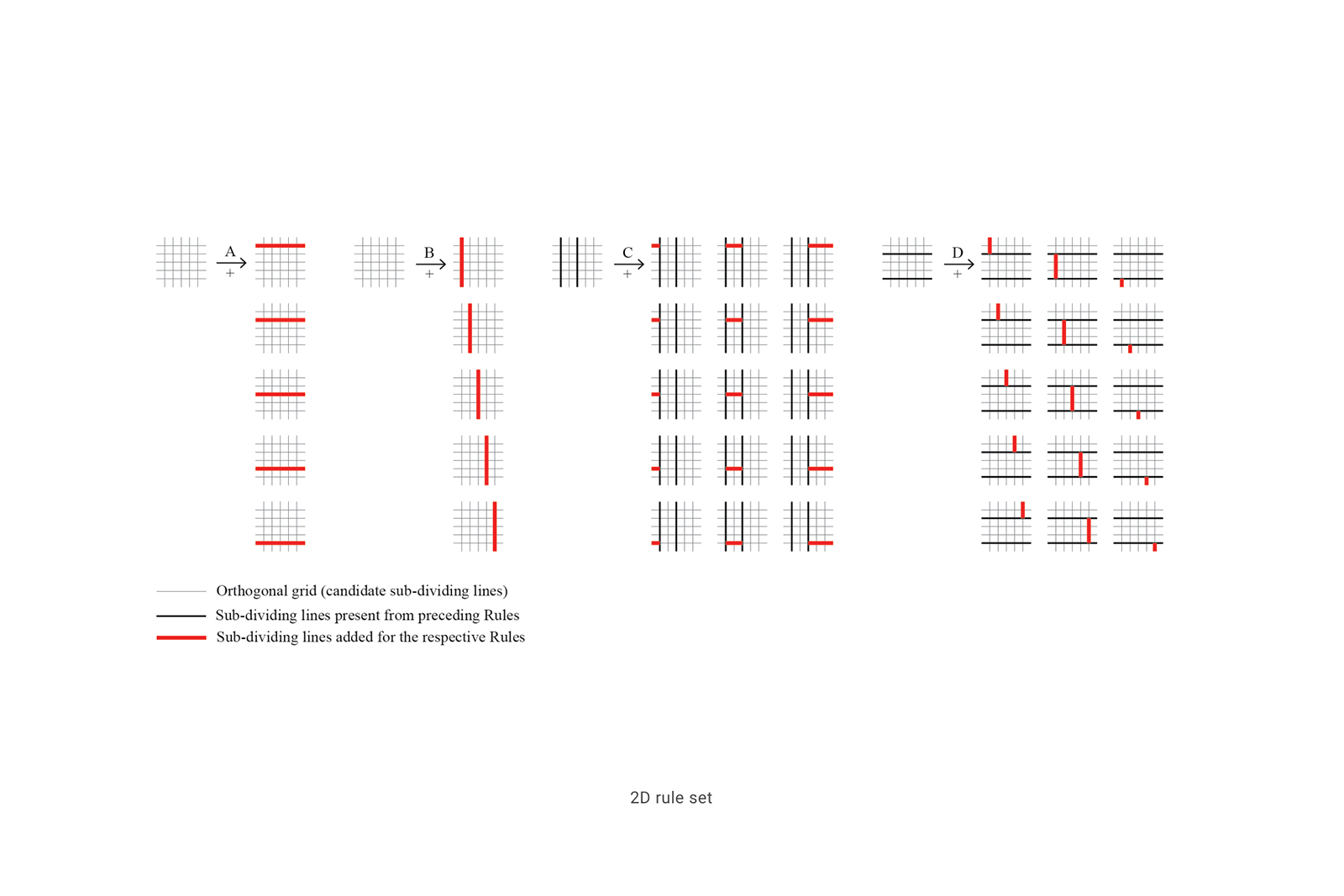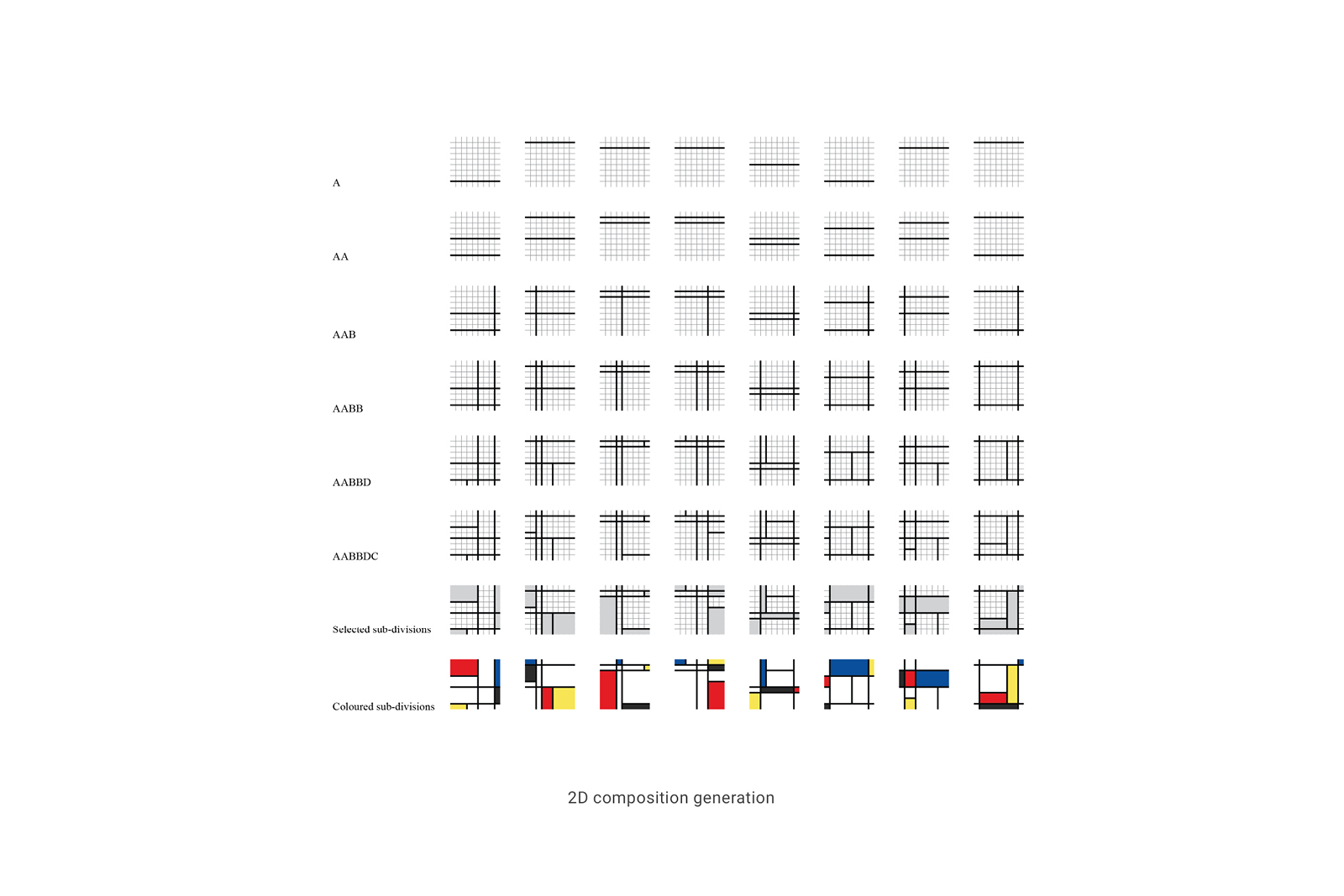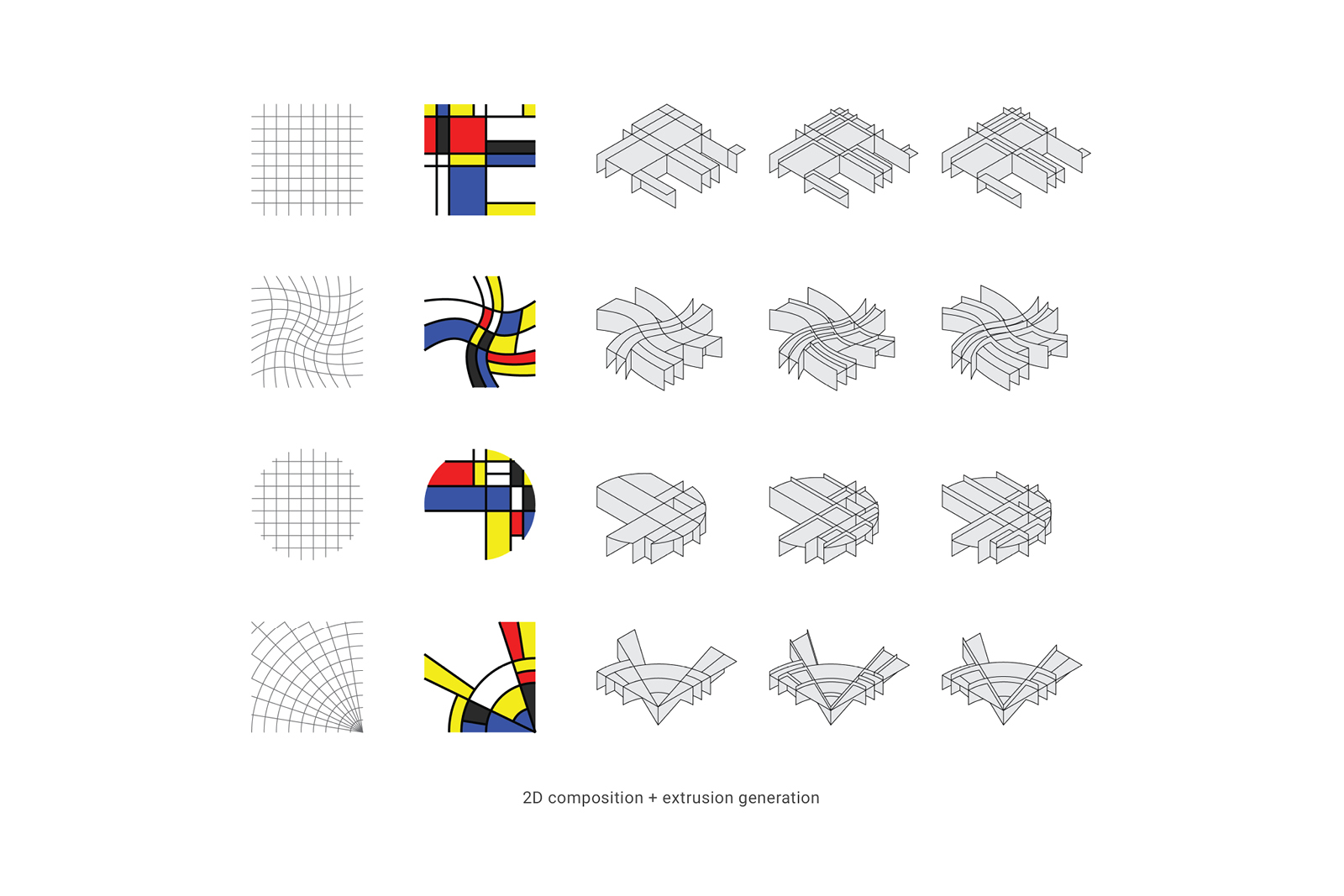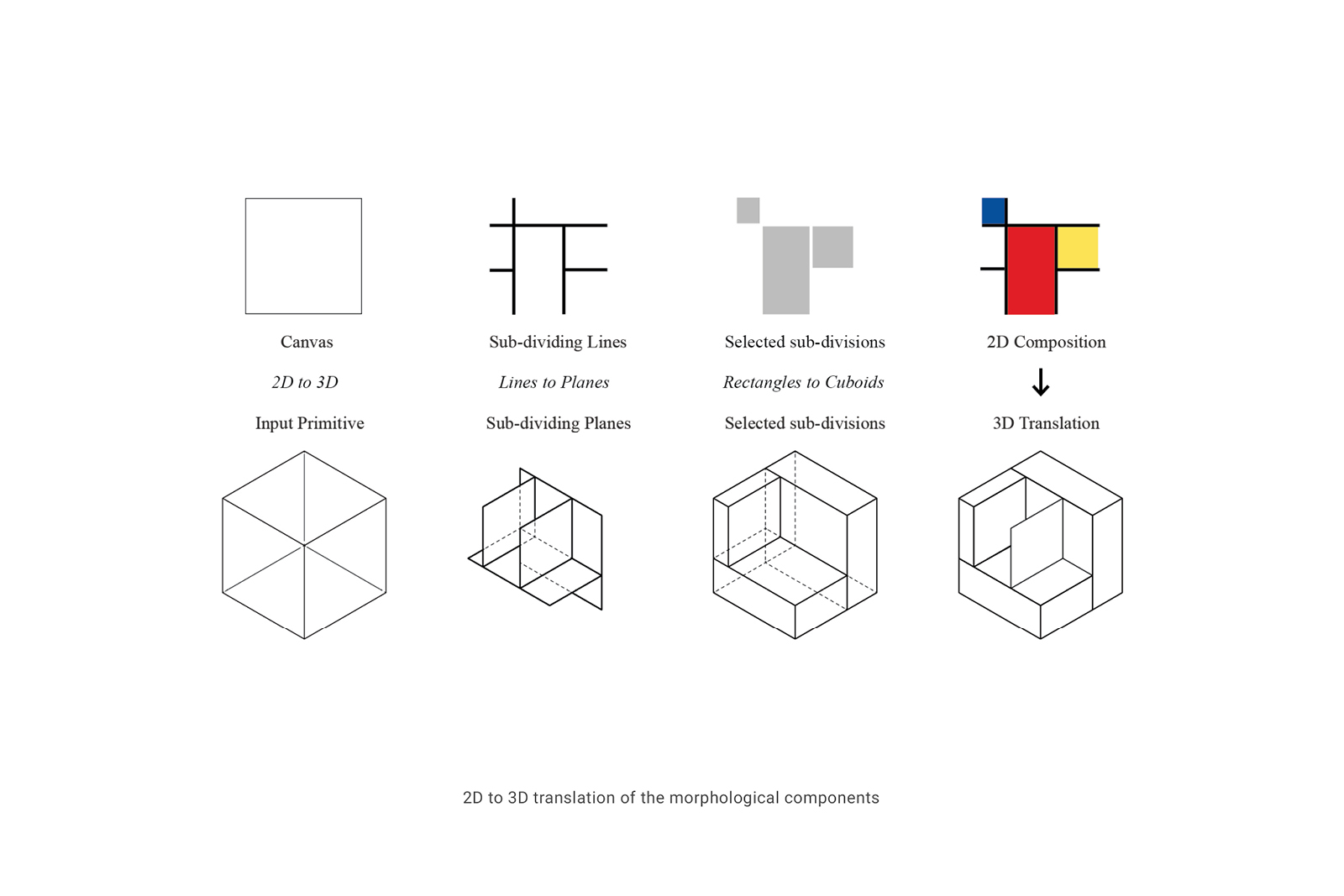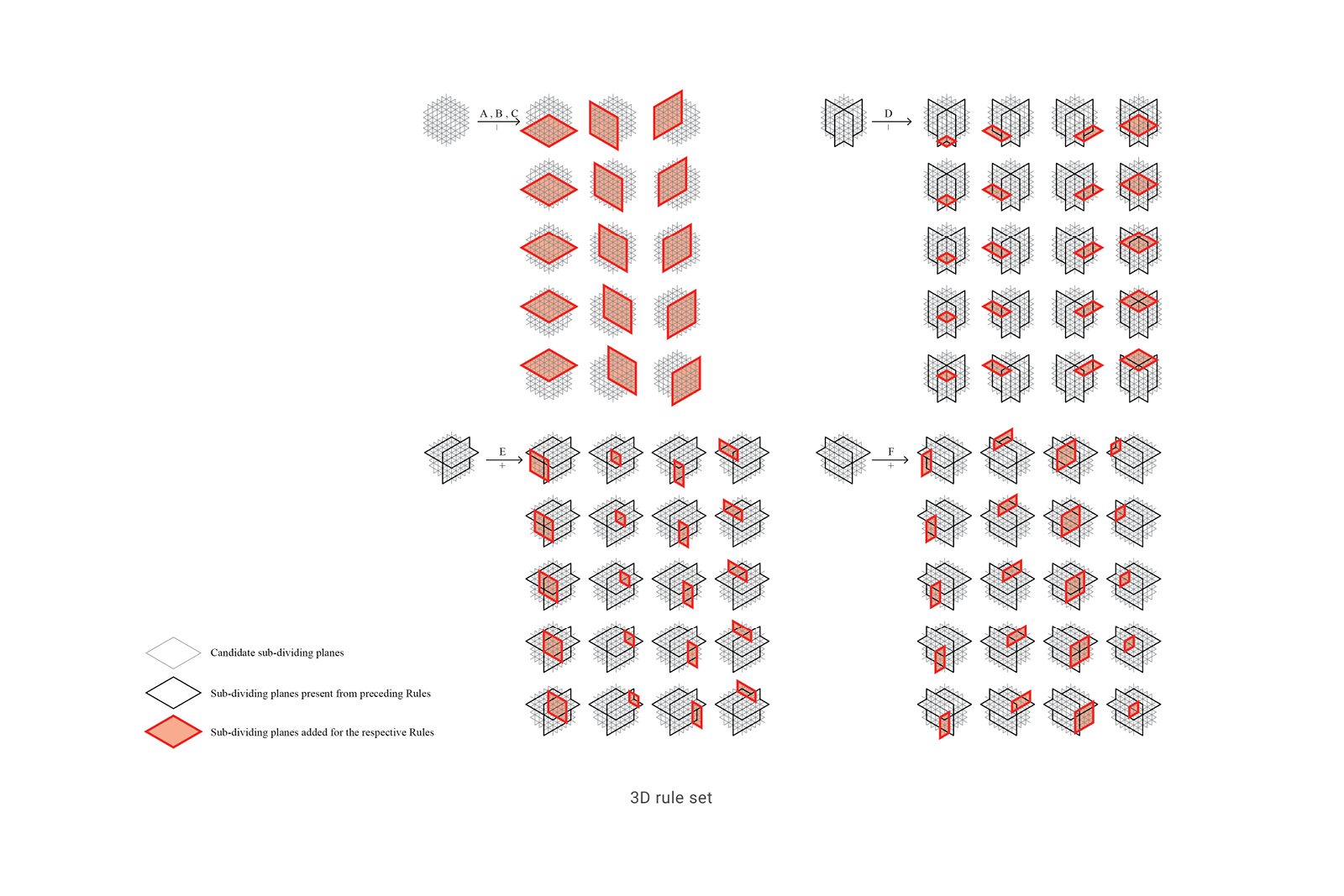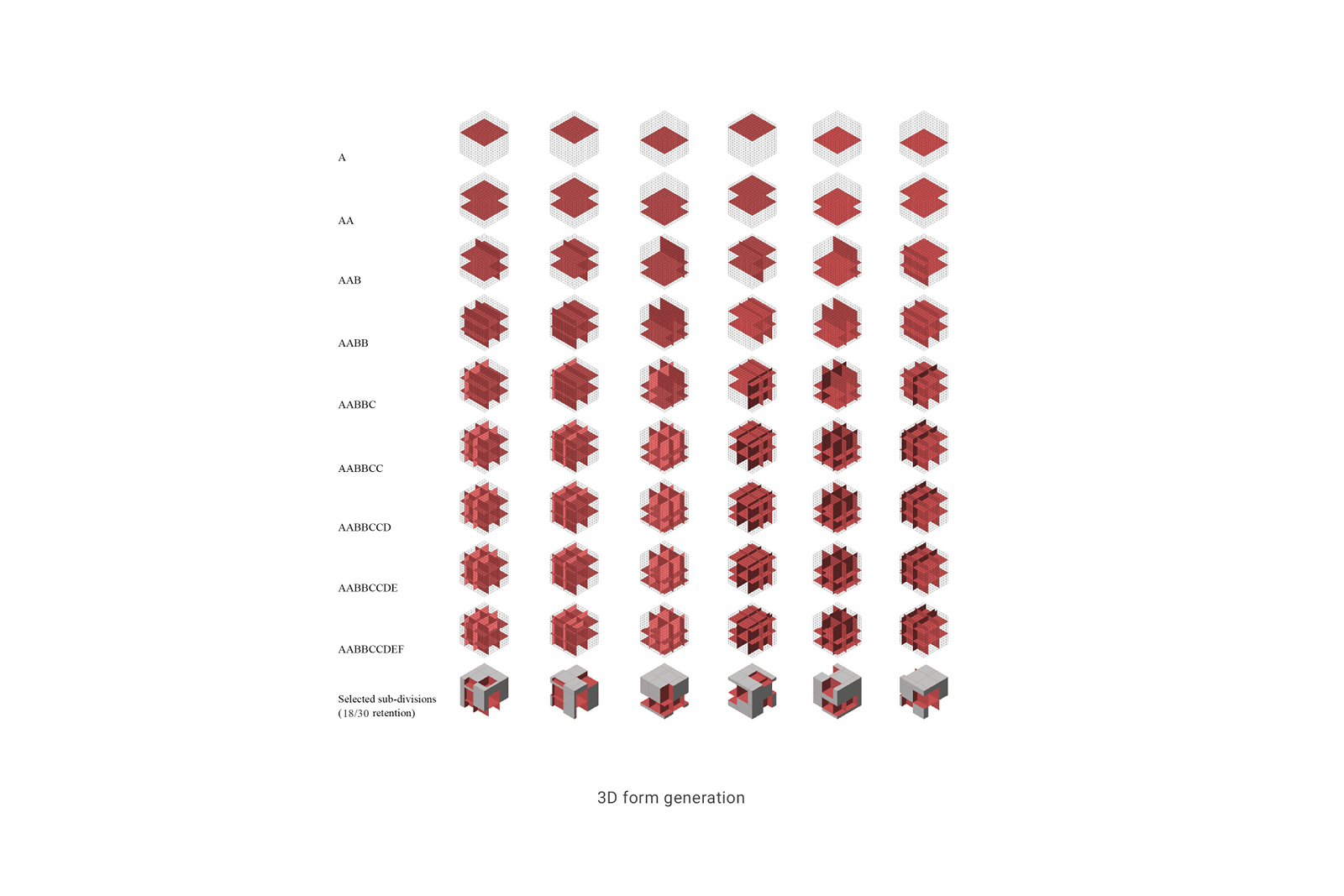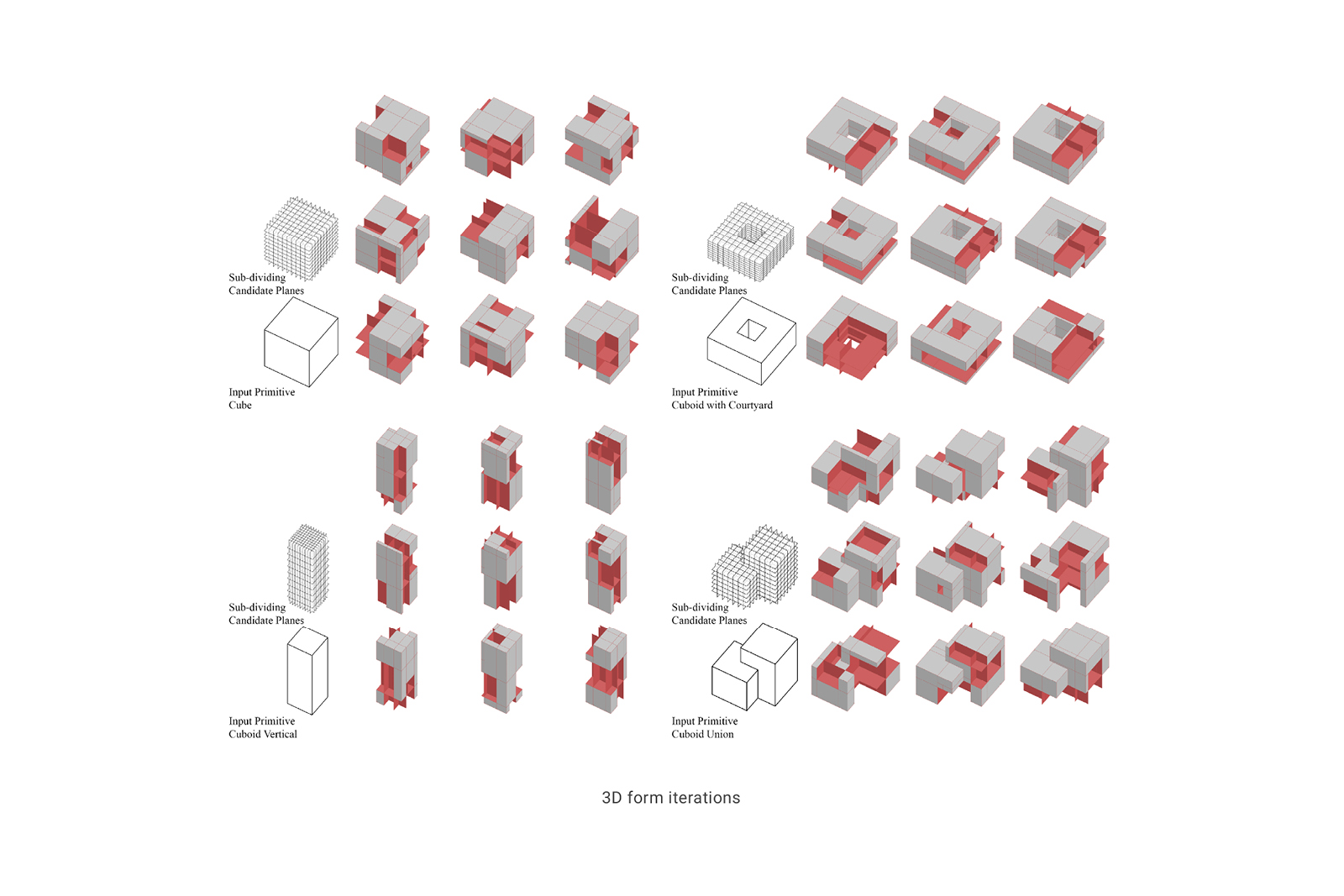CHINGREE GRASSHOPPER PLUGIN
MONDRIAN INSPIRED 2D COMPOSITION & 3D FORM GENERATOR
WEsearch lab has released a free plugin which uses custom defined generative algorithms to generate Piet Mondrian inspired 2D compositions and 3D forms. The plugin uses user defined string rule sets to sequentially sub-divide a 2D boundary and a 3D form with sub-dividing curves and surfaces respectively to generate the compositions and 3D forms. The plugin, named Chingree, works on Grasshopper which is Rhino3D’s visual scripting platform. It can be downloaded for free from here.
Mondrian’s compositions and architecture have a symbiotic relationship of inspiring and influencing each other. Mondrian’s principles of plasticity allowed the architects to play with abstraction of mass. Mondrian’s planes and grids are not only visually similar to the operative design techniques of modernism, but also compliment the industrial production of architecture. His neo-plastic compositions influenced Frank Lloyd Wright’s philosophy of spatial configuration and Mies van der Rohe’s plan of the Barcelona Pavilion. The International Style of the 20s and 30s got its inspiration from Mondrian's principles of simple horizontal and vertical intersecting lines and asymmetric visual weight.
The visual analysis of the original compositions leads to three observations – i) the compositions are rectangles of varying aspect ratio, ii) the compositions are sub-divided with two kinds of vertical (edge to edge and split) and two kinds of horizontal (edge to edge and split) lines, and iii) few of the sub-divided portions of the compositions are selected for colouring with red, blue, yellow and black.
These observations are used to appropriate the 2D compositions by sequentially sub-dividing a rectangle with lines (edge to edge and split) in x and y directions, and selecting few of the sub-divisions for colouring. The principles of sub-division and selection are also applied in 3D to generate 3D embodiments. The initial geometry changes from canvas (2D) to cuboids (3D), the sub-dividing agents change from lines (1D) to planes (2D), and sub-divided components change from rectangles (2D) to cuboids (3D). Consequently, the 2 axes (x and y) change to 3 planes (xy, yz and zx). Similar to edge to edge and split lines in 2D, primitive shapes are sub-divided with two kinds of planes (face to face and split) in xy, yz and zx planes. Few of the sub-divided portions of the primitive shapes are selected for colouring.
The 3D embodiments show visual similarity to the lines and the overhanging planes of the Prairie style and the flattened elevations appropriate the visual ethos of the original compositions. Colour in 3D may also be interpreted as texture or materiality. The procedural nature of the process can be extended to deconstruct any architectural typology to generate infinite variations. These can act as the starting points for finer articulation of the geometry in the design development phase. Architects shall no longer need to appropriate the appropriation. The free plugin and example files can be downloaded from here.


